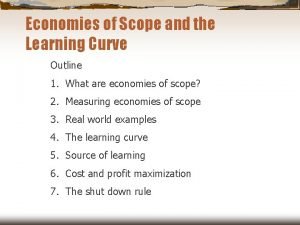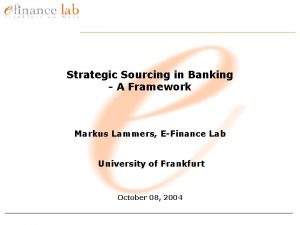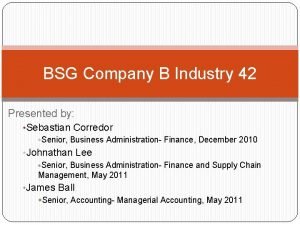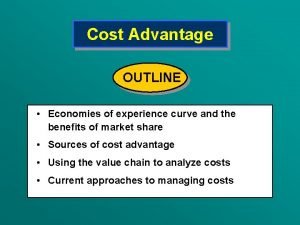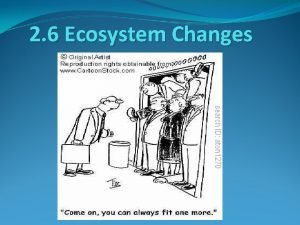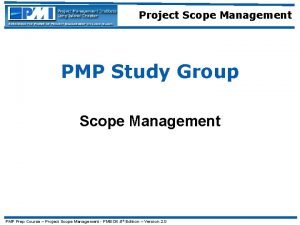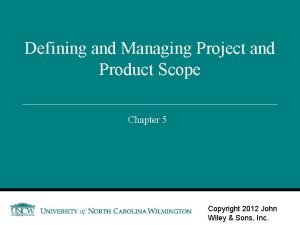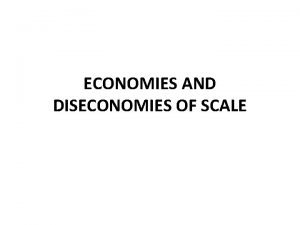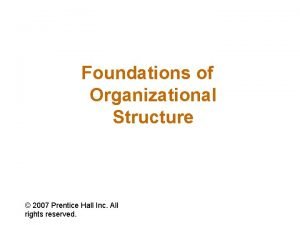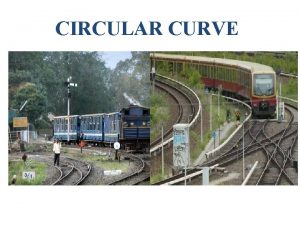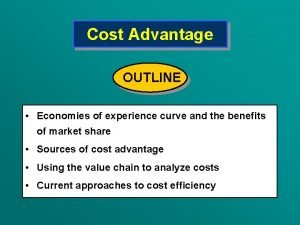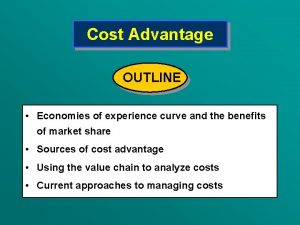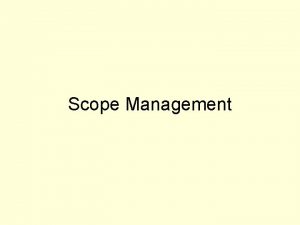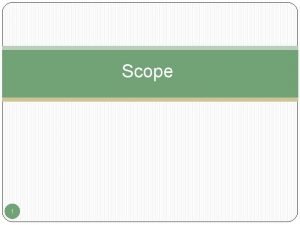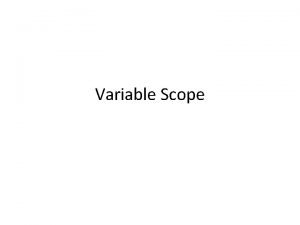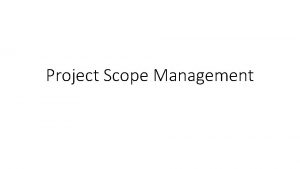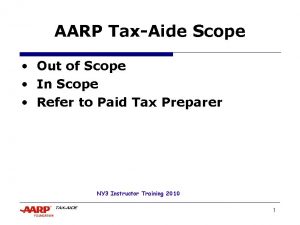Economies of Scope and the Learning Curve Outline













- Slides: 13

Economies of Scope and the Learning Curve Outline 1. What are economies of scope? 2. Measuring economies of scope 3. Real world examples 4. The learning curve 5. Source of learning 6. Cost and profit maximization 7. The shut down rule

Economies of Scope If a single firm can jointly produce goods X and Y more cheaply that any combination of firms could produce them separately, then the production of X and Y is characterized by economies of scope This is an extension of the concept of economies of scale to the multi product case

Economies of scope can be measured by as follows: Where C(Q 1, Q 2) is the cost of jointly producing goods 1 and 2 in the respective quantities; C(Q 1) is is the cost of producing good 1 alone, and similarly for C(Q 2). Example: Let C(Q 1) = $12 million; C(Q 2) = $8 million; and C(Q 1, Q 2) = $17 million. Thus: Thus joint production of goods 1 and 2 would result in a 15 percent reduction in total costs

Economies of scope arise from “complementarities” in the production or distribution of distinct goods or services

Real world examples ØEconomies of scope between cable TV and high speed internet service. ØProduction of timber and particle board. ØCorn and ethanol production ØProduction of beef and hides. ØPower generation and distribution ØJoint cargo and passenger transportation in airlines reduces excess capacity. ØGlobal wholesale distribution of cheese, salad dressing, and cigarettes (example: Phillip-Morris-Kraft). ØComputer aided design of (CAD) of aircraft components.

The Learning Curve The learning curve embodies the (inverse) relationship between average production cost and cumulative output.

Over 1, 000, 000 sold We should have this figured out by now

Sources of learning • The experience of the workforce tends to increase with cumulative output—thus workers are more familiar with the production process and have their movements/activities become routinized or a matter of habit. • There are usually several ways to do a task, and it takes time and experimentation to find the best way. • Quality control for inputs and outputs needs time to identify potential problem areas. • Input suppliers have their owning learning process

Figure 7. 6 a Average Cost Example: Texas Instruments pushed calculator prices from about $1, 000 to around $10 in the 1970 s. Learning curve Cumulative Output Average cost is a decreasing function of cumulative output

Figure 7. 6 b Average Cost Learning is manifested by a downward shift of the LAC function LAC (year 1) Increasing returns Learning LAC (year 2) 1, 000 1, 500 Rate of Output (per Month)

Figure 7. 7 Costs and Profit-Maximization: The single product case Dollars per Unit of Output AC Demand ' MR' P¡ P* AC MC Q¡ Q* MR Demand Qmin Q' Output Green-shaded area is economic profit

Figure 7. 8 Loss Minimization Means producing Some Output

Summary üIf the firm shuts down production, then losses will be equal to fixed cost, or: Losses = üIf the firm supplies Q* units at the price P*, then: Losses = P* Moral of the story: So long as price (average revenue) exceeds average variable cost, the loss minimizing strategy will entail producing some output.
 Curve outline
Curve outline Outsourcing defintion
Outsourcing defintion How to increase eps in bsg
How to increase eps in bsg Experience curve economies
Experience curve economies S curve and j curve
S curve and j curve J curve vs s curve
J curve vs s curve Quote sandwich examples
Quote sandwich examples Scope management pmp
Scope management pmp Use case diagram
Use case diagram Cuadro comparativo entre e-learning b-learning y m-learning
Cuadro comparativo entre e-learning b-learning y m-learning Define diseconomies of scale
Define diseconomies of scale Economies and diseconomies of work specialization
Economies and diseconomies of work specialization Sigmoidal and hyperbolic curve
Sigmoidal and hyperbolic curve Curve of wilson definition
Curve of wilson definition
